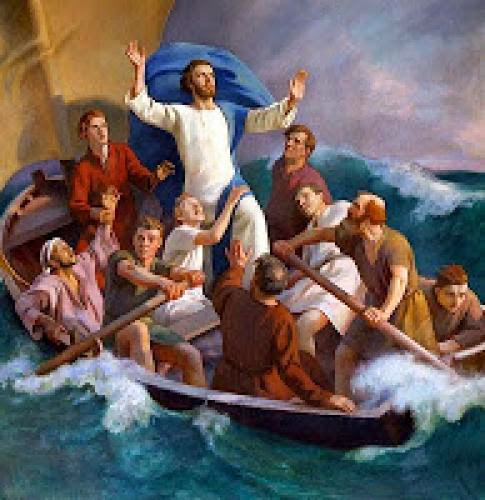
The Knights Templar occupy a unique niche in the chronicles of history; those who write historical fiction have no shortage of fodder for their novels, as there is a wealth of information - sometimes conflicting. The Templar order was feared, hated, respected, hailed, and coveted across a wide spectrum of medieval society, both in Europe and the Holy Land. To be certain, this knightly order had few equals; they forged a new path and formed their bond upon a foundation like no other. They were true originals.
In modern times they are speculated upon in countless ways - the Templars control the banking system, the stock market, are behind every uprising around the globe, wear strange hats and drive jalopies in parades, their secret symbols are on currency, and if a scapegoat is needed then look no further than the The Order of the Poor Fellow Soldiers of Christ and the Temple of Solomon.
There is much speculation, informed and otherwise, concerning the Knights Templar, but this piece will briefly touch upon their humble genesis and what facts are undisputed by historians.
After Jerusalem was captured during the First Crusade in 1099, religious zeal swelled as the news of the Crusaders' victory spread across Europe. Pious pilgrims trekked to the Holy City; however, they were beset on the perilous roads of Palestine, suffering the loss of their belongings and even their lives. Nine knights later formed an armed brotherhood to protect the pilgrim roads of which Charles Addison puts it nicely:
To alleviate the dangers and distresses to which these pious enthusiasts were exposed, to guard the honour of the saintly virgins and matrons, and to protect the gray hairs of the venerable palmer, nine noble knights formed a holy brotherhood in arms, and entered into a solemn compact to aid one another in clearing the highways of infidels, and of robbers, and in protecting the pilgrims through the passes and defiles of the mountains to the Holy City.1
Red Cross Patt'ee - Scott Higginbotham
Moreover, their brotherhood was unique and original owing to the fact that these knights were warriors, but ones that embraced the same vows as that of monks - poverty, chastity, and obedience. The ideal of a dashing knight astride a pawing destrier, begging a lady's favor to wear on his arm had taken an odd turn. Troubadours and bards had lost a portion of the deep, chivalrous well upon which to draw their verse. Addison writes further, "They renounced the world and its pleasures, and in the holy church of the Resurrection, in the presence of the patriarch of Jerusalem, they embraced vows of perpetual chastity, obedience, and poverty, after the manner of monks."2
In 1118 these nine knights, led by Hugues de Payens the order's first Grand Master, were granted usage of a portion of the King of Jerusalem's quarters, which was part of the al-Aqsa Mosque, believed to be built over King Solomon's temple. "It was from this place that the Order took its name - the Order of the Poor Fellow-Soldiers of Christ and the Temple of Solomon (Ordo Pauperum Commilitonum Christi Templique Salominici); Templars for short."3
Beauseant - Scott Higginbotham
Until they were officially recognized, the Knights Templar remained a small and obscure force for about the first decade of their existence. They operated largely upon their own initiative, but with the blessing and support of the King of Jerusalem and its Patriarch. They initially wore no distinctive devices that proclaimed this new order, but their actions piqued the interest of Bernard of Clairvaux, head of the Cistercian monks, for it was Bernard that organized the Council of Troyes in 1129 thus giving the order official papal recognition. This council transformed this small band that simply protected pilgrims into the army of Christendom and the interests of the Church.4
Templar Cross Sword - Scott Higginbotham
The Order would soon grow to be one of the most formidable fighting forces in medieval Europe, transcending borders, and drawing some of the most skilled knights into their ranks. They were fighting men, but they were also monks, adhering to a strict Benedictine rule. The red cross patt'ee on their surcoats (with minor variances) and the black and white Beauseant shield and banner were soon adopted as part of their distinction - many knights during the crusading era had crosses etched into the pommel of their swords.
Future posts will expand upon their rise, their nuances, and their ultimate demise. But their legacy lives on as an interesting footnote in history and fuels much conjecture for novelists, theorists, and the curious. Be sure to watch the video that follows - approximately 6 minutes and delves into the psyche of the order's founder.
1Addison, Charles G. (2012-01-17). The History of the Knights Templars, the Temple Church, and the Temple (Kindle Locations 211-215). Kindle Edition. 2Addison, Charles G. (2012-01-17). The History of the Knights Templars, the Temple Church, and the Temple (Kindle Locations 216-218). Kindle Edition.3Temple of Mysteries (2010-12-01). The Knights Templar (Kindle Locations 116-118). Temple of Mysteries. Kindle Edition. 4Temple of Mysteries (2010-12-01). The Knights Templar (Kindle Locations 148-149). Temple of Mysteries. Kindle Edition. Scott Higginbotham is the author of "A Soul's Ransom", "a novel set in the fourteenth century where William de Courtenay's mettle is tested, weighed, and refined, and "For A Thousand Generations", where Edward Leaver navigates a world where his purpose is defined with an eye to the future.


















